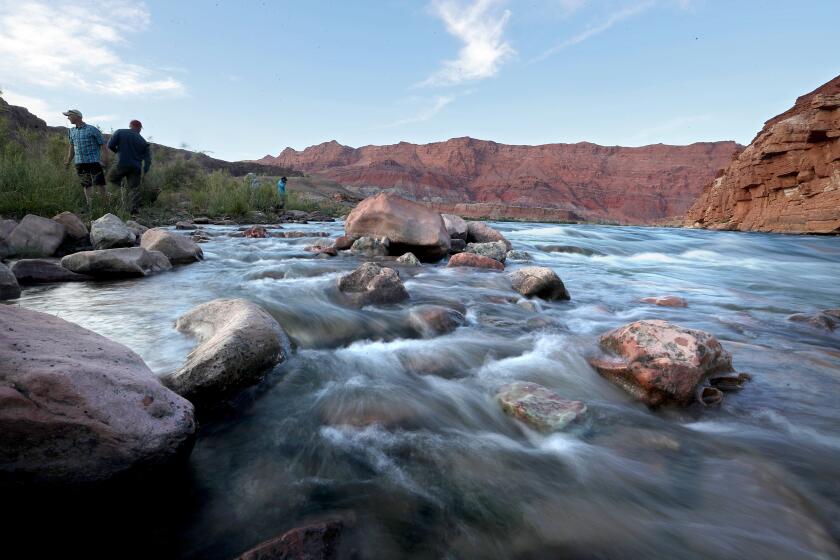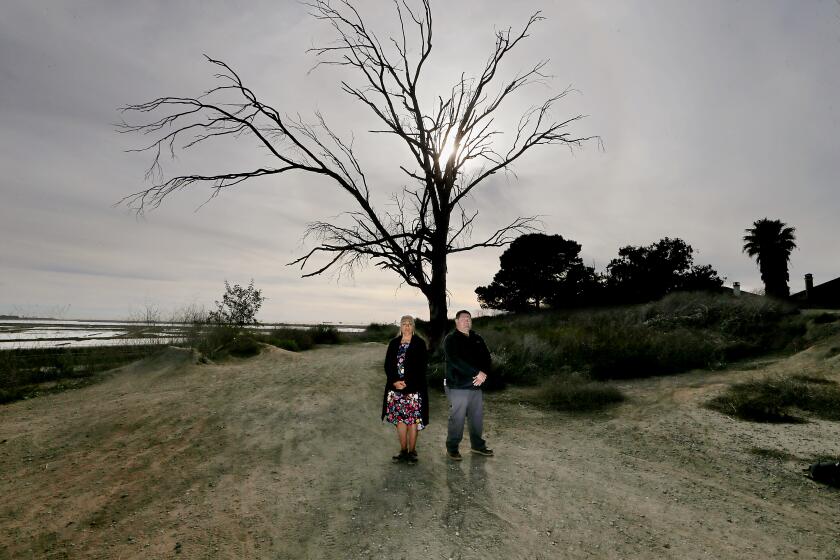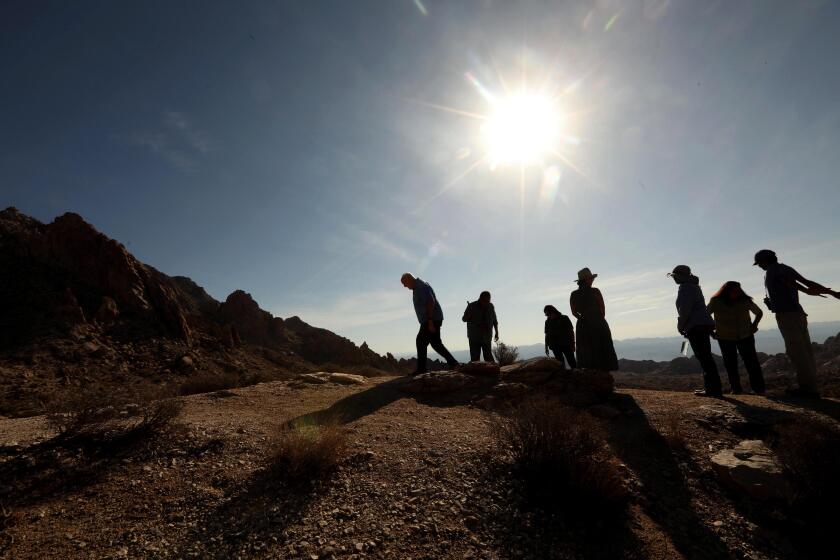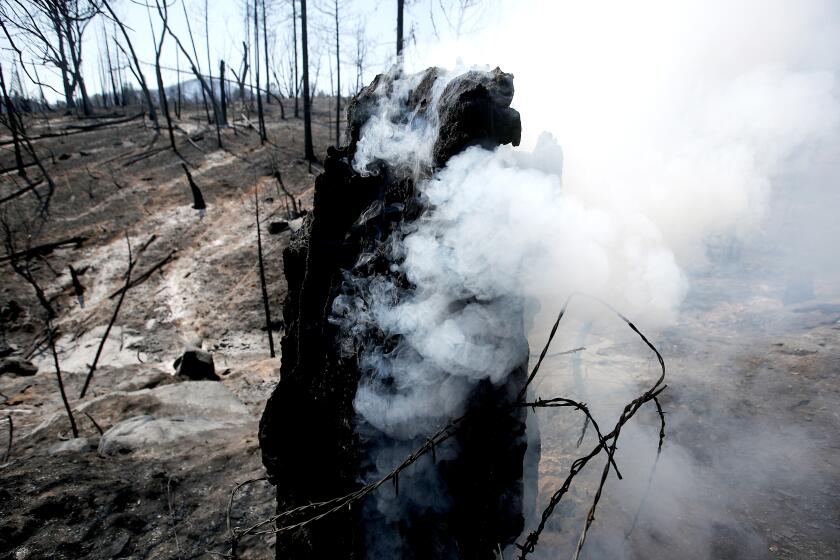Native tribes are getting a slice of their land back — under the condition that they preserve it
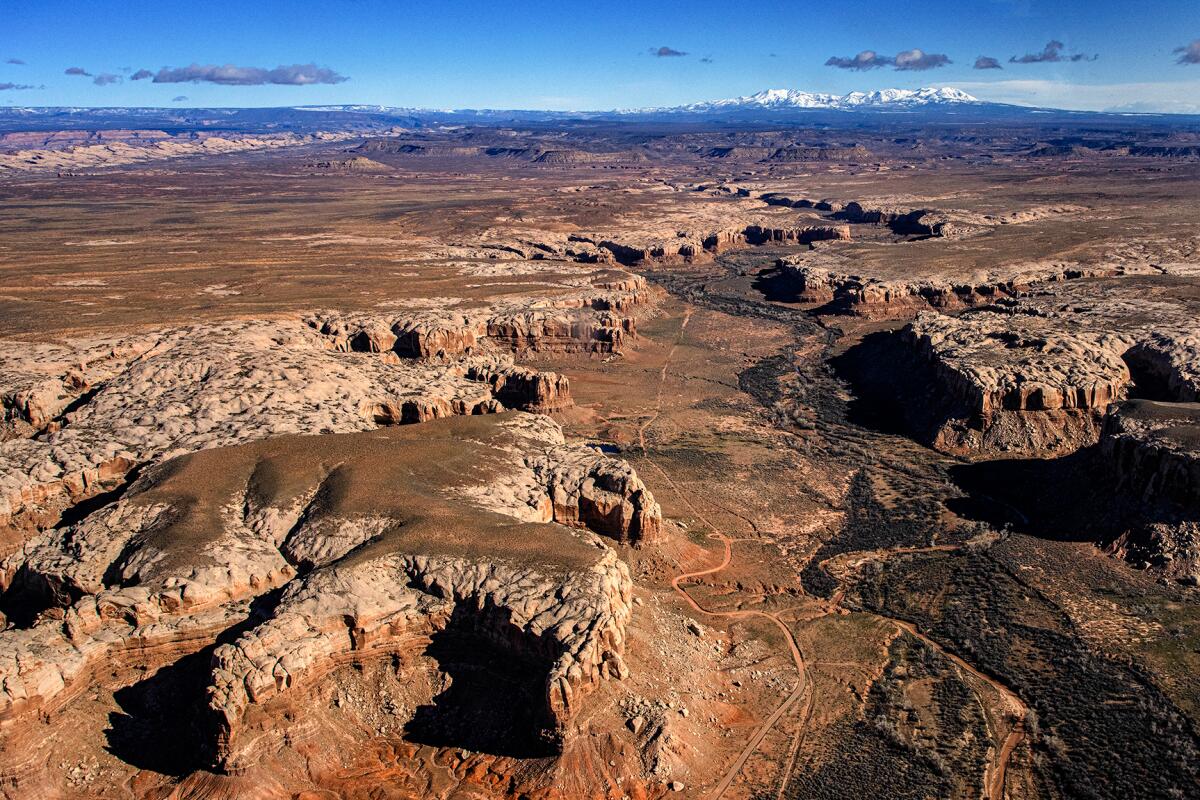
BLUFF, Utah — In February 2020, Dave Herrero drove into the canyon country here in southeastern Utah to visit a slice of land that was up for sale — a 320-acre ranch that stretched deep into the red-rock canyon near the small town of Bluff.
“Just hop the fence and walk down the drive,” a local rock climber had told him. “You’ll see some stuff.”
Herrero and his girlfriend did just that, pushing through salt brush to make their way into a rocky alcove. Amid freezing rain, it took a few seconds for his eyes to adjust.
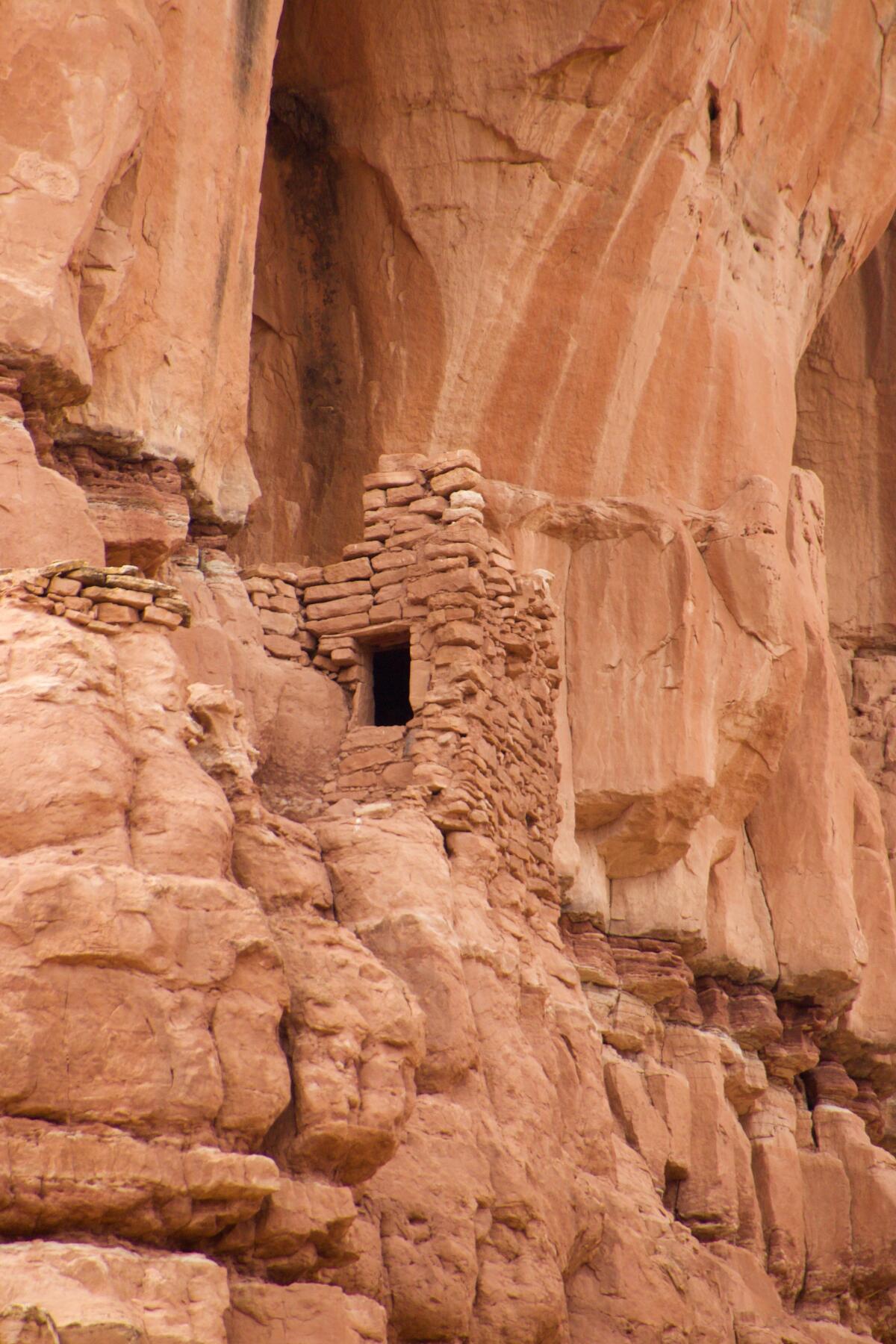
“Oh my God!” he exclaimed.
High off the ground, set into the wall, was a huge structure, with large brick walls, built into the canyon like a castle turret. As the two looked around, they realized there were cliff dwellings and other structures throughout the canyon. On a canyon wall, they found rock art: a huge panel of horses and other designs still used by the Hopi, Navajo and Ute tribes whose reservations were nearby.
“I cannot believe something like this is, first of all, owned by somebody,” Herrero, 43, recalled thinking. “And second of all, that it’s also for sale.”
The federal government is opening negotiations on long-term plans for the Colorado River. Leaders of tribes say they don’t want to be left out of key talks.
In July, his California-based employer, the nonprofit Wildlands Conservancy, purchased the ranch for $2.5 million from the family that owned it and began writing a deed that it hopes will become a model for working with tribes to protect wilderness in the American West from real estate developers, mining companies and oil drillers.
In what would be a novel arrangement, the deed is expected to include a coalition of five tribes as co-owners and managers with Wildlands — an effort to acknowledge the history of the land, which the conservation group named Cottonwood Wash.
“There are once tribes that lived in these areas that were forcibly removed,” said Davina Smith, a member of the Diné, or Navajo, who has worked with different organizations to protect land in the Four Corners region. “We have to recognize that.”
In speeches and in fundraising emails, it’s become common for conservation groups to perform “land acknowledgments” to name and honor the tribes that once controlled the land the groups are seeking to protect.
“We want to raise the bar on land acknowledgment,” said Frazier Haney, the executive director of Wildlands. “We don’t just want to acknowledge the tribes in speeches — we want to acknowledge them on the actual land deed.”
Orange County returned 6 acres of land to the Acjachemen and Tongva people. Tribal leaders say it’s a small step in a movement to protect their heritage.
But Wildlands will need to prove that co-ownership goes beyond feel-good symbolism.
The primary mission of Wildlands is to “protect beauty,” and one of its tenets is to “Imparadise the Earth by healing human impacts.” Tribes here have a conflicting philosophy: What imperils the land is not human impact, but rather the lack of Native impact.
Can non-Native conservationists actually move beyond acknowledgment? Can the co-ownership model bring meaningful change?
: :
The traditional model of conservation in the West has long followed the lead of environmentalists such as John Muir— the “father of the national parks” — who saw untracked wilderness as a sort of Eden that would fall to corruption under man’s influence. His model of conservation was simple: Keep people out.
That school of thought feels foreign to Natives such as Smith, 49.
“You have all these prominent writers writing about the West, but they focus on the landscape,” she said. “They don’t think about the Native tribes who have always actually been living in this landscape.”
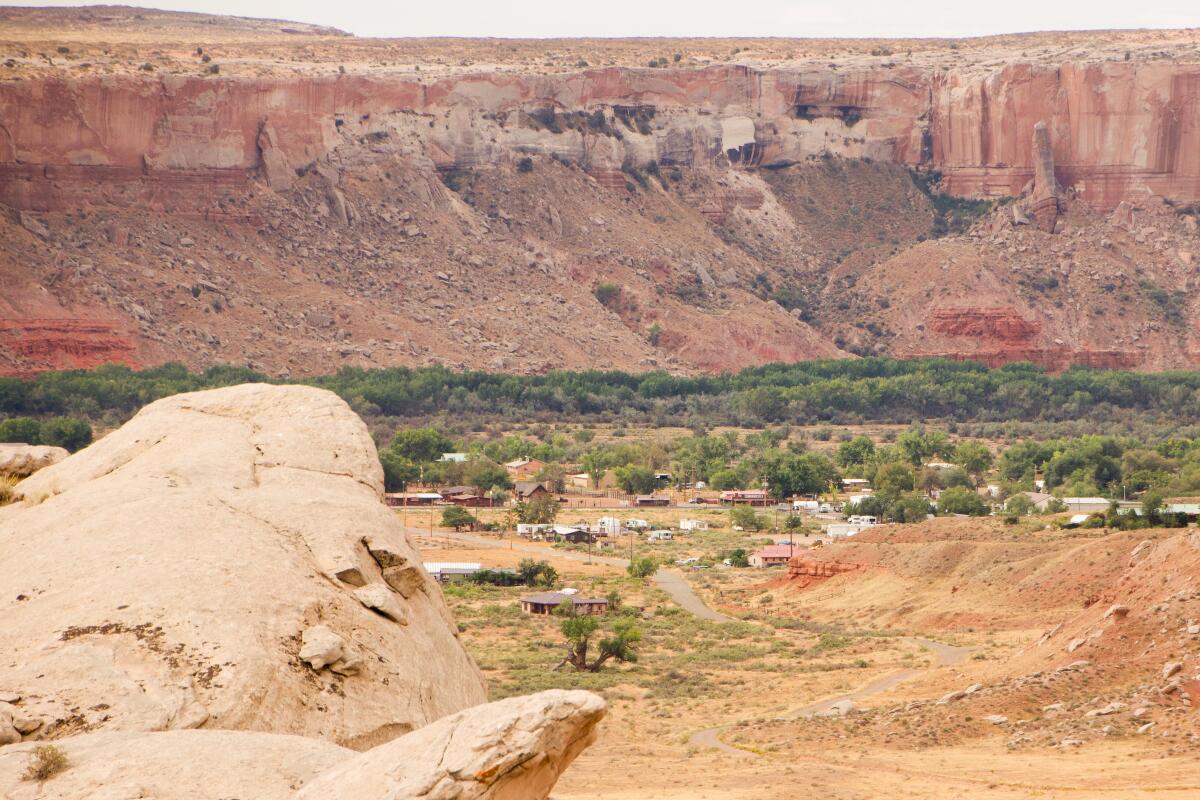
That’s why, a decade ago, tribal leaders here began discussing how they might have more influence over how the federal government manages tribal homelands.
In 2015, a coalition of five tribes — Hopi, Navajo, Uintah and Ouray Ute, Ute Mountain Ute and Zuni — sent a letter to then-President Obama proposing the creation of the Bears Ears National Monument in Utah on land known as the Colorado Plateau.
Under a novel co-management scheme, the tribes would have direct say in ecological stewardship and how to regulate economic activity and recreation.
For centuries, Native Americans have visited Avi Kwa Ame, or Spirit Mountain, to seek religious visions and give thanks for the bounty of the Earth.
Less than a year after Obama issued a presidential proclamation creating the monument on Dec. 28, 2016, then-President Trump undid it at the urging of the Utah state government, which wanted to leave the land open to uranium mining, oil drilling and cattle grazing. When President Biden took office in 2021, one of his first acts was reestablishing Bears Ears.
The Cottonwood Wash lies within the boundaries of the Bears Ears Monument, but because it’s private property, it wasn’t included as part of the monument.
That gave Wildlands a playbook. In 2022, its leaders approached the Bears Ears Inter-Tribal Coalition, the official alliance of the five tribes, to say they were considering buying the Cottonwood Wash and were interested in joint ownership and management.
As part of their push, Herrero and Haney drove to four reservations to meet with tribal leaders.
Some were suspicious at first. Anthony Sanchez, the head councilman for the Pueblo of Zuni, explained that non-Native groups will sometimes use supposed ties to tribes to boost their own PR.
“In the past, groups have used our name to raise funding, and then the Pueblo is left with nothing,” said Sanchez, 41.
For Wildlands, one point was nonnegotiable: The Cottonwood Wash would never be developed or used for any economic activity.
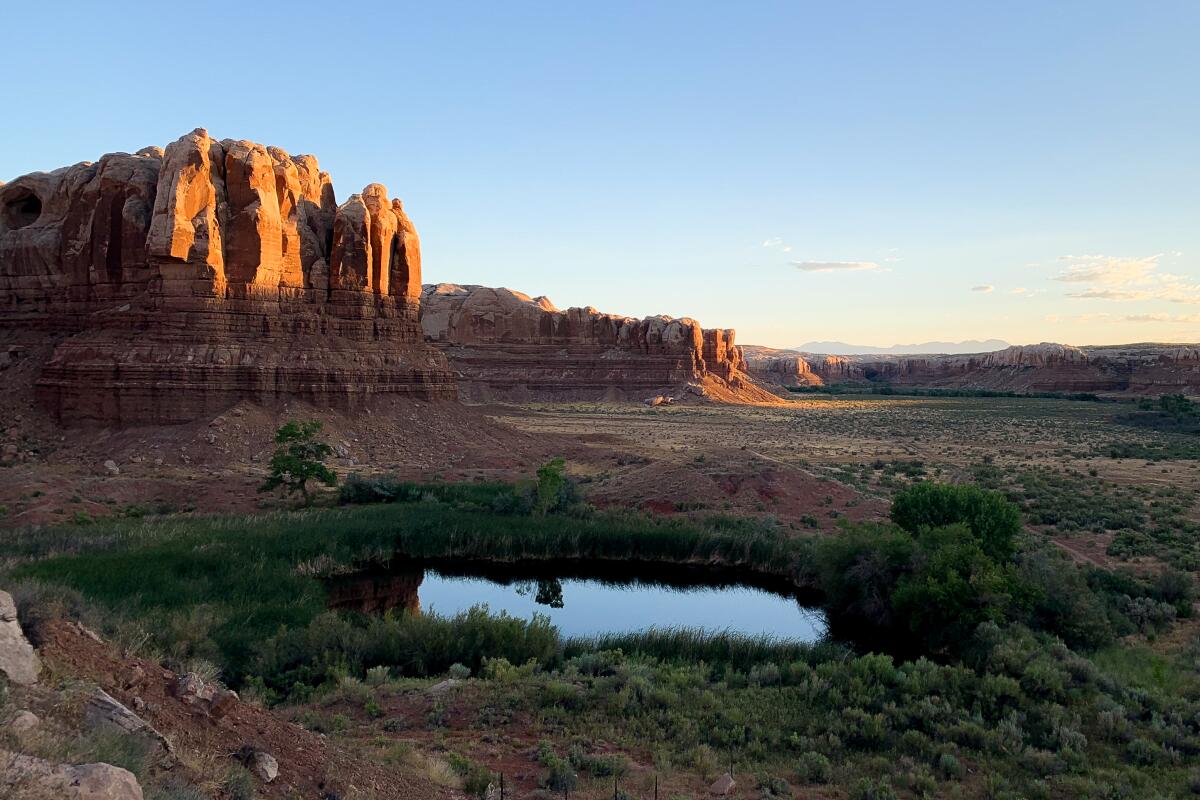
This sort of mitigated sovereignty — you can own the land, but you can’t use it or make money from it — might have been a deal-breaker for other tribes. But it lined up with the Inter-Tribal Coalition’s own mission.
“Our main goal is to continue protecting our cultural significant ties to this area — that’s our biggest concern,” said Sanchez, now the Zuni representative on the coalition. “We’re not there to make money. We’re not there to do anything but protect it.”
Sanchez explained that the coalition is less interested in Native ownership of the land than in Native stewardship of the land and making sure that nobody — Native or non-Native — is forced off the land. “We’re all on this same land together,” he said.
The federal government is opening negotiations on long-term plans for the Colorado River. Leaders of tribes say they don’t want to be left out of key talks.
Smith, the Navajo representative to the coalition, said in her view — and in some Navajo philosophies — land shouldn’t be considered a commodity.
“I was taught that land isn’t something for you to own,” she said. “It’s something for you to take care of.”
But that belief has sometimes put her at odds with other Navajos.
The unemployment rate on the Navajo reservation has at times reached 50%. Some members — especially those old enough to remember the old uranium and coal mines — want more Navajo land opened up to mining and oil drilling.
In June, Interior Secretary Deb Haaland, a member of the Laguna Pueblo tribe, flew to New Mexico to celebrate a 20-year ban on oil drilling in Chaco Culture National Historical Park. Her visit was cut short: A group of Navajo landowners blocked the road to the canyon, protesting the ban.
Smith said she’s worked hard to sell the mission of conservation to skeptical Navajos. Her grandfather worked the uranium mines, and even though it was a paycheck, he would come home covered in toxic yellow dust. Eventually, the family learned its well had also been contaminated.
“This extraction sucks away everything. It leaves us with nothing,” Smith said. “I feel that we can get our heads together and find other tools. We can steer away from any form of extraction, and we can heal our land.”
: :
On a rainy morning in September, Herrero set out to tour the wash. Cottonwoods and peach-leaf willows dipped their branches into the muddy stream bed that traverses the property. Wildlands had closed escrow two months earlier, and Herrero was already imagining where he would take down barbed wire and build new hiking trails for visitors.
Herrero pointed to an alcove in the canyon wall, where a lush hanging garden grew above a sort of natural amphitheater, hidden from the park entrance.
“We want to block this part of the wash off as a private place for the tribes to hold ceremonies,” he said, explaining his hope that the co-ownership plan could make it easier for the five tribes to find that communion within Bears Ears. On the national monument, tribal members have to apply for permits to burn bonfires or camp.
“Here, it’d be as simple as sending me a text giving us a heads up,” he said.
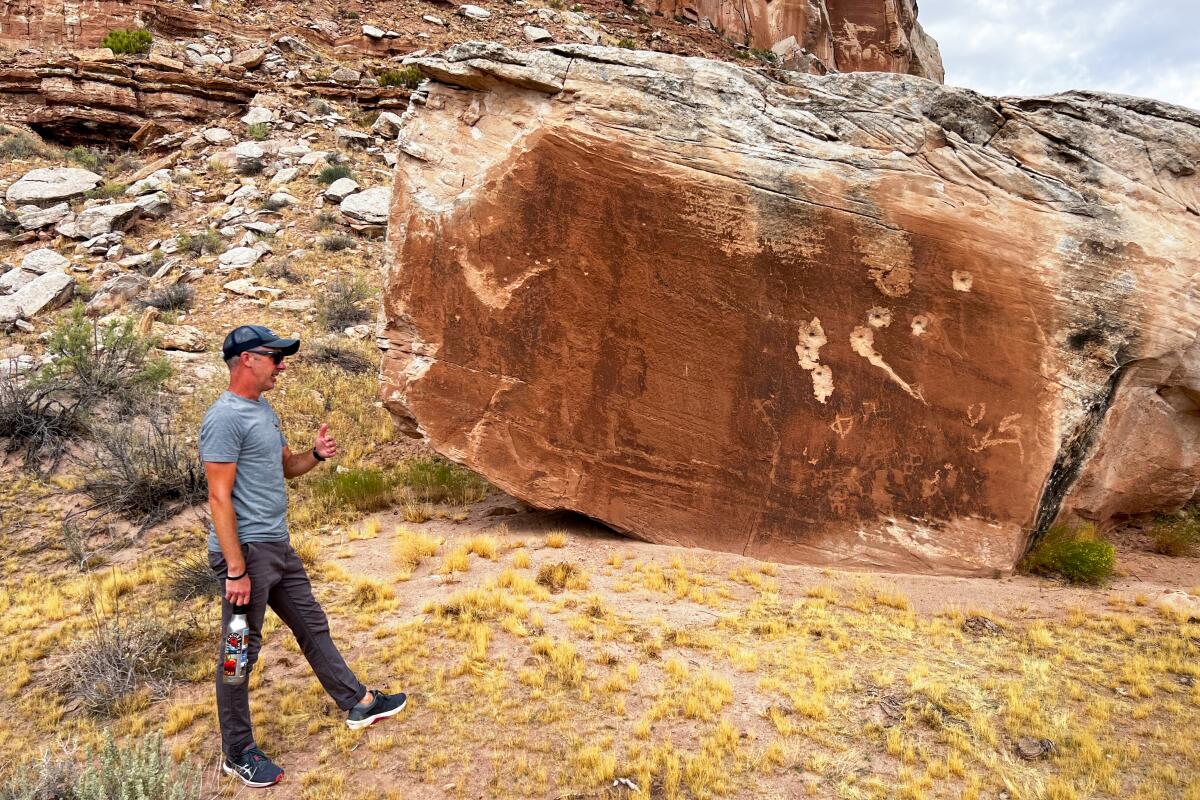
Herrero grew up reading Edward Abbey and Wallace Stegner — chroniclers of the Southwest who readily admitted their own “anti-social” tendencies and believed humans were the ruin of the canyon lands, of desert solitude.
But spending time in the Cottonwood Wash has changed his thinking about wild lands. One night, as he fell asleep in his hotel in Bluff, he thought about how the wash must have, at some points in history, been home to five times as many people as the current town.
As he walked, Herrero periodically bent down to pull out a small shrub of tamarisk — an invasive species. He explained that plans for the property mostly revolve around creating a hospitable environment for native species.
Both the tribal coalition and Wildlands say they are united around that goal. But that broad agreement — ecological health — could be tested as they work out the specifics and lawyers work through byzantine property law to forge the actual co-ownership deal.
Sanchez offered an example to explain how the “West” has a different concept of ecology than the Zuni. At one point, Zuni leadership had to negotiate with the federal Bureau of Land Management about a government plan to reduce the fish population by electrifying certain bodies of water — a step BLM biologists had concluded was necessary to keep the riparian ecosystem healthy.
“We explained to them that, in a spiritual way, that affects us back here,” Sanchez said, even suggesting that it could make people sick.
He acknowledged that some Western ecologists might see such beliefs as unscientific. But he encourages them to consider that, after millenniums spent living in the same environment, Zuni have an organic understanding of complex ecosystems that scientists might still be catching up on.
Ecologists have had to learn that lesson the hard way in other places.
In Yosemite, Miwuk people had a tradition of burning away the brush and saplings around their villages. When the U.S. Army forcibly removed them from the Yosemite Valley in the 1850s, environmentalists like Muir pushed the federal government to adopt a policy of “preservationism,” ending prescribed burns and other damage to the landscape. Today, the buildup of fuels has created a fire hazard that threatens the park’s survival.
Members of the Southern Sierra Miwuk Nation became the latest Indigenous tribe to watch homes burn despite knowing it could have been avoided.
In April, Sanchez visited the Cottonwood Wash with other tribal leaders for the first time. “It was surreal,” he said.
The canyon looked like a landscape he’d come to recognize in Zuni prayers. Hiking up to a natural spring near one of the canyon walls, he spotted an eagle plume at the water’s edge, arranged as it would be in a ceremony.

“That’s very traditional,” he said. “It’s our spirits welcoming us back home.”
Sanchez began thinking about the young people on the Zuni reservation. One of his missions as a tribe councilman has been to heal cycles of domestic violence. He’s hopeful that young Zuni could find peace and healing on the Cottonwood Wash.
“It’s like visiting an old relative,” he said.
More to Read
Sign up for Essential California
The most important California stories and recommendations in your inbox every morning.
You may occasionally receive promotional content from the Los Angeles Times.
